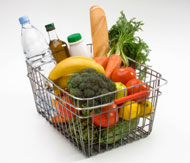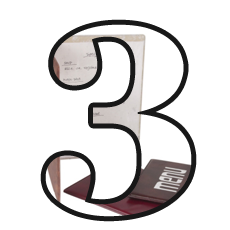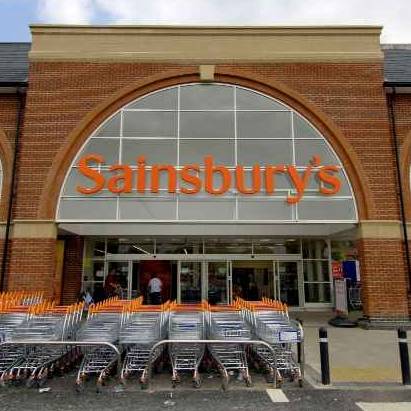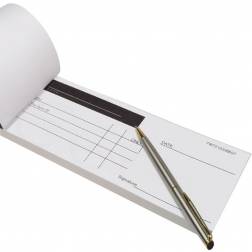 The cost of food has rocketed, yet with a few focused techniques you can save £1,000s annually on supermarket shopping.
The cost of food has rocketed, yet with a few focused techniques you can save £1,000s annually on supermarket shopping.
This step-by-step guide includes when to shop to maximise discounts, how to do the downshift challenge to get the same for less, compare online supermarkets and get £100s of grocery discount coupons for free.
In this guide
Quick links
A supermarket's job is to make us spend
Supermarkets are cathedrals of consumerism; they're almost perfectly honed marketing environments, benefiting from millions of pounds of research into how to encourage and seduce us into buying and spending more than we need.
It's one reason that if you want to teach an eight-year-old about money, the best place to start is a supermarket. Ask them what they can smell: it'll usually be bread or a bakery, as the scent makes us hungry and likely to buy more food, so the supermarket profits.
 This means as consumers we must learn counter-moves. Obviously eating before shopping helps, but this is just one trick. Supermarkets' other tactics include the following:
This means as consumers we must learn counter-moves. Obviously eating before shopping helps, but this is just one trick. Supermarkets' other tactics include the following:
- Sweets and magazines placed by the till
These are impulse buys, so putting them near the till gives stores one last attempt to grab our cash. - Store layouts make us walk the whole distance
Regularly bought items tend to be spread around the store, so we need to pass many other tempting goodies to complete our shopping. - Eye level products are the profitable ones
The most profitable stock is placed at eye level (or children’s eye level if it's targeted at them), yet profitable goods tend not to be the best deals. The age old adage ‘look high and low for something’ really does apply. - Sales type signage for non-sales items
Seedless grapes and other attractive treats are usually near the store entrance, often below cost price, to entice us in. Similar signs and displays are used elsewhere to promote deals, even when they're not on sale. Bright colours and the words 'discount' and 'sale' make us feel good, yet the reduction may be pennies and cheaper equivalents hidden elsewhere.
Also see When promos go wrong, our gallery of nonsensical offers from supermarkets. Users sent us their best spots, eg, 'Air freshener 75p each or 2 for £5!' and in best Tony Hart fashion we compiled a gallery.
Don't let them steer your trolley
The beauty of supermarket design is that it's all aimed at making us impulse spend. Almost all the techniques in this guide are designed to put you back in charge. For those on a strict budget, it's important to get in the right mindset.
Replace "What's the cheapest way to get all the goodies I want?"
With “On my £XYZ budget, what's the best value I can get with it?”
Of course, working out a budget is part of a wider strategy and how much to prioritise food shopping depends on your other expenditure. Use the free Budget Planner tool to help.
The Downshift Challenge
Over the years, supermarkets have hypnotised us into spending more and moving up the brand chain. Many people gradually buy increasingly more expensive versions of the same thing.
The downshift challenge, which provides ENORMOUS savings, has a simple premise:
Drop one brand level on everything and see if you can tell the difference. If you can't, stick with the cheaper product.
Let's applaud the sheer marketing genius of this. The system allows supermarkets to justify huge price variations. Think about it for a second: when you're in Tesco, you assume Tesco Finest is glam and gorgeous and Tesco Value is cheap and nasty, so the immense price difference feels legitimate.
Yet who actually decides this? Tesco of course! Its packaging and product placement are all designed to support this myth.
Don’t get us wrong, there are differences in ingredients and production quality. Yet it isn’t uniform: just because the salmon en croute is great, it doesn’t mean the same brand's gourmet mousse, made in a different factory in another part of the world, is too.

Watch The Video Guide
Courtesy of Five TV. Originally from It Pays To Watch! 05/2008
The downshift technique ... typical saving £800/year
Don’t worry, we're not about to argue you should buy no-frills everything. The aim's to downshift only where you can't tell the difference and, for many families, this alone can save 15% a year on shopping bills, typically £800.
- The Downshift Challenge in-store.
The next time you shop, swap one of everything to something just one brand level lower. So if you usually buy four cans of Tesco's own-brand baked beans, this time buy three and one Tesco Value. If you use luxury tropical shower gel, drop to Asda’s own brand. - The Downshift Challenge online
The supermarket comparison site mySupermarket* includes an option to trade down products. While you're shopping, click the blue 'swap and save' bar next to the product to see the downshifted option.
The impact is enormous:
Drop one brand level on everything and the average bill's cut by a third. On a £100 weekly shop, that's £1,700 a year less.
The proof of this stat is based on detailed research. Martin has done a number of TV programmes where he's downshifted a family's shopping and the 33% saving is staggeringly consistent. Yet for ITV1's 2007 Tonight Supermarket Cheap programme, they went a step further and number-crunched hundreds of prices from the big four supermarkets.
Again, there was a standard 33% average saving by dropping one brand level for every product. This consistency indicates that supermarkets deliberately devise their price structures this way. It's worth noting the biggest downshift savings aren't from premium brands to manufacturer brands, but for those already lower down the brand chain to begin with.
| Downshift from … | Tesco (1) | Morrisons (2) | Sainsbury’s (3) | Asda (4) |
|---|---|---|---|---|
| Luxury to branded | 8% | 16% | 22% | 12% |
| Branded to own brand | 31% | 36% | 31% | 35% |
| Own brand to value | 37% | 39% | 45% | 41% |
| Average for a brand drop | 29% | 34% | 34% | 35% |
| (1) 400 items compared (2) 266 items compared (3 ) 314 items compared (4) 319 items compared | ||||
| Product | Mainstream Brand | Supermarket own | Supermarket economy |
|---|---|---|---|
| Jaffa cakes (36pk) | £3.10 | £1.85 | £1.08 |
| Teabags (240 pk) | £4.00 | £3.69 | £0.84 |
| Toilet roll (4 pk) | £1.97 | £1.95 | £1.31 |
| Toothpaste (100ml) | £1.00 | £0.45 | £0.22 |
| Lager (4 X 500ml cans) | £4.00 | £2.49 | £0.88 |
Remember, downshifting's about 'trying' not 'switching'
The downshift challenge isn’t about automatically dropping a brand level, it’s about seeing if you can notice any difference. If you don’t like the lower brand level or the drop in quality is too severe, all but those who are in drastic need of urgent savings should switch back. Yet you'll be surprised at how few things you notice the change.
However there's an important point to watch for when trying downshifted goods:
Taste with your mouth, not with your eyes
The packaging and look of a product has a big psychological effect: just knowing something is more expensive means, after years of retail hypnosis, we assume it’s better. Taste with that knowledge, and you often prefer it. If you can taste the food blind, great. If not, at least don't have the packaging out when you do.
A quick story from Martin: for a TV experiment, a professional chef cooked up two identical three course meals, one using normal ingredients, the other downshifted.
Off camera, I spoke to one of the assistant chefs; he'd dipped his finger first into a pack of I can't believe it's not butter and then the generic version, probably called I can't believe it's not better. He pointed at the cheaper brand and said, "you can tell the quality's worse as it's much saltier."
Yet a chef I independently asked said salty butter isn't automatically a bad sign. Was the assistant's reaction simply cognitive dissonance; spotting a difference and using it to justify it better, just because it was the expensive one?
Either way when the family tasted the three courses blind, they actually preferred the cheaper produce, never mind couldn't spot the difference.
Most spot the difference only on half the goods
The results of the downshift challenge again fit a standard pattern. Most people seem to only note the difference on around half the shopping. Therefore, it's worth quickly running through the maths.
For a family shop of £100 a week ...
- Annual Expenditure: £5,200
- Downshift everything - annual saving: £1,700
- Downshift only 'no-difference' items - annual saving: £800
Downshifting can cut 15% off a family’s shop saving over £800 a year, without noticing the difference
Please discuss/report your Downshift Savings
More quick downshift tips
If you're following the Downshift, there are a few more things to consider which can help boost the savings.
-
Downshift cleaning products and cosmetics
Rather strangely, reports show people are more likely to stick with branded washing powders, shower gels and other cleaning products than food. Yet these products don't even need tasting and the saving is huge. So try downshifting these too.
Then again, Old Style MoneySavers wouldn't forgive me if I omitted to say you can clean the whole house with white vinegar and lemon juice (read more on Old Style Cleaning and full info in the charity Thrifty Ways book). -
Don't assume downshifting is worse nutritionally
Often lower cost products can be better, as there are fewer flavourings, colourings and chemicals. Always check the label if this is a concern. -
Downshifting is about price, not brand
Some people religiously downshift brands, even if the higher brand is on special offer and cheaper. In that case, there's no need, pick the cheaper product, comparing on cost per gram. -
Don't stop your downshift
Once you've successfully downshifted, try it again a few weeks later; you may be able to drop yet another brand level on some goods and save more. -
Downshift ingredients further
If you're cooking food, half the taste comes from your talents in the kitchen. So often you can get away with downshifting more, as you'll make up for it with time and skill. -
Downshift your supermarket too
It's also worth considering the well known uber-cheap supermarkets such as Aldi, Lidl and Netto, which, even if you don’t want to use them all the time, are great for a monthly stock up of staple goods, at substantial savings. The same 'try it and see' technique can be used here too. -
Finding the tastiest own brands
SupermarketOwnBrand, that reviews supermarket own brands, pitting them against their brand name rivals and giving them a mark out of ten. Everything from shortbread to Chardonnay is covered.
Reviews are written by food critic Martin Isark; he’s gradually tasting his way through the big supermarkets and has reviewed more than 10,000 products from Aldi, Asda, Co-operative Food, Lidl, Marks & Spencer, Sainsbury's, Tesco, Netto, Morrisons and Waitrose. His view is it shows own-brands can smack the bottoms of posh ranges, even when it comes to taste; you definitely don’t always get what you pay for.
Are own brands the same food in disguise?
After the downshift challenge, many people will be tempted to ask, “is there actually any difference between normal brands and own-brands?” Often they’re made in the same factories.
To help break through this, there's a special discussion in the forum, which asks any current or past factory workers to dish the dirt on whether there's really any difference. Of course there’s no guarantee it’s true, but it makes fun reading.
Plus during the ITV1 Supermarket Cheap programme, Martin got a scientist to examine some own brands and compare them to the main brands. Surprisingly, almost none were nutritionally identical. The surmise is small differences are deliberately added so no one can say “they’re the same”. Even so, as they’re often very similar in taste, it doesn’t matter too much.
Grab vouchers, codes and deals
Vouchers and deals are an integral part of most supermarkets' strategies. The promotions follow what I call a 'capture and exploit' system.
- CAPTURE. The aim's to attract customers who wouldn't come otherwise. These are generally discount vouchers or codes or a small range of heavily discounted items.
- EXPLOIT. This is about targeting existing customers, with the dual aim of making them feel they're getting better value to promote customer stickiness and trying to target impulse spending through promotions on attractive luxury items.
Turn the tables to gain
Correctly used, these promotions are a goldmine, allowing you to scythe chunks off your shopping bill.
-
£100s of free grocery coupons
Grocery coupons don't just come in magazines; many are available instantly on the web. Look for coupons on already-discounted products, as they'll work out uber-cheap. Draw up a coupon battle plan before hitting the store, and systematically file coupons in a concertina folder, splitting into sections such as meat or veggies.
To get loads of free vouchers see the Daily Updated: Supermarket Coupons List -
Get big discounts off your weekly shop
Supermarkets commonly put out introductory discount vouchers to 'capture' new customers e.g. £15 off a £50 spend at Waitrose. For a detailed list of free codes and vouchers, see the Daily Updated: Shopping Vouchers List
Don't miss out on updates to this guide Get MoneySavingExpert's free, spam-free weekly email full of guides & loopholes
-
When to BOGOF and how to find them
Bogof! No, not you! BOGOF stands for ‘buy one, get one free’.
Often there to 'exploit' our impulses, these can be a menace or angel. The time to grab 'em is when the BOGOF (or three-for-two or half-price deal) is on a good that won't go off that you'd buy anyway. Classic examples include toothpaste, bog roll and batteries. If you see these offers, get as many as you can store.
To locate supermarkets’ current special offers, check the forum's Food and Grocery Shopping board. - Ask for a raincheck voucher
If a special offer item is out of stock, some supermarkets will give you a voucher entitling you to the same deal at a later date.- Tesco 'Special Promise' vouchers. Some Tescos hand out 'Special Promise', also known as raincheck, vouchers when special offer products are out of stock.
This policy goes way back and many old shop assistants still give them out, yet newer staff haven't heard of them. Try your luck and explain at the customer services desk that you want a voucher, to take advantage of the deal at a later date. You cannot get them on 'When It's Gone It's Gone' offers. - Asda 'Smiley' vouchers. Asda colleagues are allowed to give out 'Smiley' vouchers for up to £1, when a customer's had a problem or something isn’t quite right. One of these reasons is that a special offer product's out of stock. Vouchers are at shop assistant's discretion, so don't be demanding, yet a friendly smile goes a long way.
- Sainsbury's 'Special Coupons'. If a special offer's run out, Sainsbury's shop assistants dish out 'Special Coupons', allowing you to buy the same product from a different brand, at the special offer price. Again, it's at the shop assistant's discretion and some haven't heard of them, but MoneySavers report that politely explaining about the coupons can help. Coupons must be used on that day.
- Tesco 'Special Promise' vouchers. Some Tescos hand out 'Special Promise', also known as raincheck, vouchers when special offer products are out of stock.
- Join Tesco clubs
Tesco runs a baby and toddler club that's worth joining, as members get special money-off offers through the post. There's a similar club at Asda. -
Grab loyalty cards
Both Tesco, with its Clubcard, and Sainsbury's, with Nectar, offer loyalty points. While these don't provide enough value to dictate where you should shop, if you are going to shop in these stores, always use the card.
Trade in normal vouchers for Tesco's special Clubcard Rewards vouchers, available either online or in store, and each £5 voucher becomes worth £15. For detailed tips and tricks for Tesco Clubcard and Nectar, including the unique LoyaltyChecker tool to assess the value of your points stash, see the Loyalty Points Boosting guide.
Get 10% off selected brands at Ocado
Regular online supermarket Ocado shoppers should consider its Total Savings Pass, which gives 10% off 600 branded products, including Fairy liquid, Olay cream and Kellogg’s Crunchy Nut. The catch is it costs £9 a year, and it only covers 600 branded items out of 15,000.
It’s a clever system: Ocado hopes that by paying for a pass customers will stay loyal and spend more. (Ocado flogs Waitrose products, as well as other brands, but differs to Waitrose’s delivery service.)
Savings Pass holders who buy goods on special offer, eg, buy one, get one free, just get the bigger of the two discounts. But if you’ve got a discount code, such as £10 off, you get both. Here's how to work out if you'll save:
-
Only do this if it reflects your current buying habits
Don't switch supermarkets to take advantage of this deal. The average family can save 15% a year by downshifting, without noticing the difference, so try that first. Plus statistics from comparison site MySupermarket that on average Asda is 13.1% cheaper than Ocado for branded groceries, beating the 10% saving.
However, if you usually buy brands at Ocado, you could be on to a winner. For example, if you spent £50 a month on the selected groceries, you’d save £51 a year.
-
Dig out past grocery bills
Check old bills to see how much you normally spend on the 600 items listed. (To see the savings pass and 600 items, log on to your account and click Saving Pass in the top pink bar.)
While 600 products sounds a lot, by no means all branded goods are included - Ocado stocks thousands. You need to spend more than £100 a year on the groceries listed to save.
As well as the Total Savings Pass, other passes give 10% off small groups of products, eg, breakfast and homecare. These are cheaper at £2-£6, though you’re probably better off grabbing the Total Pass unless you only ever buy brands in one category.
-
Cancel if you don't use it
Be careful as Ocado automatically takes £9 every year by direct debit unless you cancel. And don’t feel obliged to shop at Ocado just because you have a pass.
Compare supermarket prices at speed
It's possible to speedily compare the prices of your typical shopping trolley at all the online supermarkets, and, better still, once you find which are the cheapest, you can just export your basket there, without entering the details again.
This takes place on the website mySupermarket*, which looks at the the five big online supermarkets: Tesco, Asda, Waitrose, Ocado and Sainsbury’s. It's simple to use and you can save your basket of goods, so you don't need to refill it each week. The savings from doing this can add up to £100s a year. Here are some quick tips:
- Check out its 'shop and save' function
As you're entering your data, mySupermarket also suggests alternative options that may be cheaper, for example, if you’re buying two six packs of cola and a 12-pack is cheaper, it’ll let you know. - Consider downshifting
It includes an option to trade down to cheaper alternatives. While you're shopping, click the blue 'swap and save' bar next to the product to see the downshifted option.
Time trips to bag bigger reductions
Everyday there are bargains to be had in the supermarket, as huge reductions are made on ‘yellow ticket’ items that are near their sell-by-dates. To build the info on this, we asked MoneySavers who work in supermarkets to spill the beans on their stores' reduction policies.
Reduction times varied by store/opening time, yet some definite patterns emerged. The first yellow stickers appear around 10am, and the silly-price reductions begin at 7pm, when stores cut prices by 75% and upwards.
| Amount you may be able to save | |||
|---|---|---|---|
| Up to 25% off | Up to 50% off | Up to 75% and up | |
| Asda | 12pm | 5pm | 9pm |
| Morrisons | - | 5pm | 7pm |
| Sainburys | 10am | 5pm | 8pm |
| Tesco | 8am | 4pm | 8pm |
| Co-op | 8am | 5pm | 7pm |
| Source: Great 'supermarket staff, tell us your reduction policies’ hunt. | |||
- Who has authority to make reductions?
Most shop floor staff have the authority to reduce prices at their discretion, so it's worth keeping your eye out for goods that are damaged/nearing their sell-by dates. Yet their overwhelming cry was: ‘we will reduce prices for friendly customers, but if you’re rude and demand a reduction – forget it'. A smile and a little politeness go a long way. - Look for reduced ‘multi-buy’ items.
Watch out for reduced items that are part of multi-buy offers, as often the computer will still deduct the full-price discount at the till. Say there’s a ‘buy two get one free’ offer on £1 shortbread, and you buy three reduced to 50p, the computer may still take off the extra £1. This isn’t guaranteed, but worth a try.
Read the great 'supermarket staff, tell us your reduction policies’ hunt
Quick tools to reduce waste
There’s no easier way to waste cash than by regularly throwing out old food that you never used. Staggeringly, the average UK home chucks away £600 worth a year, yet a few easy steps and tools for better stock management can easily reduce this.
Step 1: Don't throw 'best-befores' away
Can you define the difference between a best-before and display-until date? If not, the likelihood is you're throwing a lot of food away unnecessarily.
Always remember ...
Supermarkets usually stack from the back, so reach to the back of the shelves to find the longest 'use-by' and 'best-before' dates.
 Whether you're rummaging for reduced price goodies, or doing a clear out of stuff that's gone off, understanding labeling pays.
Whether you're rummaging for reduced price goodies, or doing a clear out of stuff that's gone off, understanding labeling pays.
- The 'use-by' date: Chuck it immediately
Use-by means just that. Perishable food such as milk, fish and eggs that go off quickly and should be thrown out after this date; if not, they're a health risk. - The 'best-before' date: Still edible after the date
You’ll usually see best-befores on longer-lasting goods such as frozen meals and tins. It’s usually safe to eat food after this date, as all it means is that the food will no longer be at optimum quality. And the longer the time to the best-before date, the longer it's likely to keep afterwards.
For example, if you buy tinned goods with a best before date two years in the future, then they're likely to still be pretty good three years ahead of time (though why you'd buy them and not eat them before then is anyone's guess). - Display-until and sell-by. Instructions for shops' staff not for you
These dates are instructions for shop staff to tell them when they should take a product off the shelves. Check the ‘use by’ and ‘best before’ dates instead.
To ensure you remember, we designed a free food labeling rules print-out, designed for you to print, stick on your fridge and check before you chuck. Print a Free Food-Saving Memo.
Buy 'beyond best befores' at a fraction of the price
As there’s no explicit safety risk just from eating food beyond its best-before date, many small independent stores specialise in selling clearance, short-dated and out-of-date stock. There’s also now an online store, Approved Food, which, once a cash-and-carry, now sells directly to the public.
Typical goods include two big Walkers packets for 99p, six tins of Farrow's peas tins 99p and Hellmans 235ml salad dressing 1p!
There's a £5.25 delivery charge, provided deliveries are under 35kg, so it's worth bulk buying. As there aren't any finite rules on how far beyond a best-before date it's still safe to eat products, you need to make the decision yourself. Generally though, the longer the original shelf life of the goods before the best-before date, the longer you can go beyond.
Step 2: Use a 2D linear tracking device
 Modern technology hasn’t come up with anything to compete with ‘the shopping list’ and so hopefully by giving it a pretentious name, it feels more important. The reason's obvious: by planning what you need before heading out, it's easier to cut out anything that goes over budget and stick to it.
Modern technology hasn’t come up with anything to compete with ‘the shopping list’ and so hopefully by giving it a pretentious name, it feels more important. The reason's obvious: by planning what you need before heading out, it's easier to cut out anything that goes over budget and stick to it.
It should also stop those unnecessary small extra trips to 'grab some more margarine', which end up costing £20 a time, as you can't resist buying more.
There are, of course, exceptions to the rule. Spotting a substantial bargain while shopping, something you were planning to buy another day, may rightfully loosen the purse strings. Always ask yourself the three key questions first: do I need it; will I use it; and can I find it cheaper anywhere else?
 Step 3: Free menu planners
Step 3: Free menu planners
While it’s admittedly time consuming, the best way to make your shopping list super-effective is by writing a meal plan for the week/month. That way you can work out what you’re going to eat every day, incorporating the ingredients you already have.
To help, there's an amazing resource, where thrifty MoneySaving Old-Stylers have put together menu planners of various thrift levels to copy and download.
Step 4: Do a larder audit
Rather than throwing food away, try doing a regular 'audit' once every few weeks of what's sitting in cupboards, fridge and freezer to see when it dates. Then you can use it before you lose it.




























